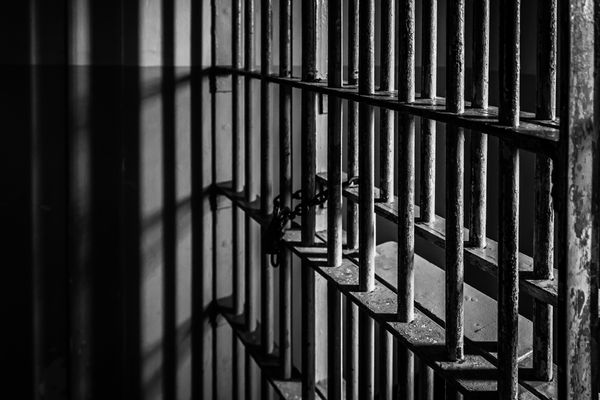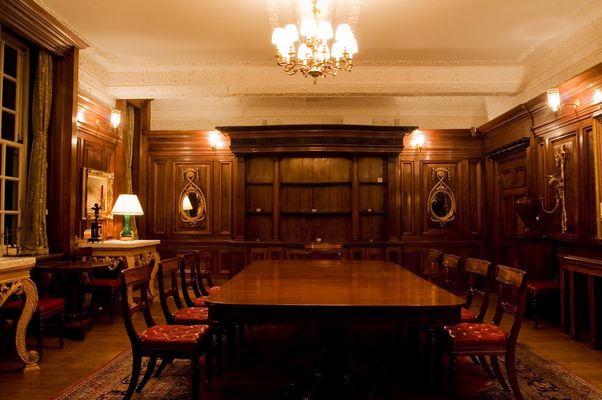2.1.9
Mary I & Her Rule
Mary I and her Ministers
Mary I and her Ministers
Mary became queen on a wave of public approval. But the reasons for this cannot be clear. Was it that the succession had passed to the next Tudor, the legal heir? Or was it that people wanted Catholicism restored?


Mary I's early years
Mary I's early years
- Mary I was the daughter of Henry VIII and his first wife, Catherine of Aragon.
- During her childhood, Mary received a thorough education.
- Following Henry VIII's divorce from Catherine of Aragon and marriage to Anne Boleyn, Mary was deemed illegitimate.
- Following years of conflict, Mary reluctantly recognised her father as the head of the Church of England.
- But Mary always remained a Catholic.


Mary I's aims
Mary I's aims
- Mary I's primary aim was to restore Catholicism to England.


Queen regnant
Queen regnant
- Mary I had no precedent for her role as queen regnant (a monarch in her own right, not through her husband).
- Many people did not like the idea of being ruled by a woman.
- This reflects the strength of 'patriarchal' ideas in Tudor society.


Mary I's ministers
Mary I's ministers
- Following the plot to change the line of succession, Mary I did not have many allies in the Privy Chamber.
- Stephen Gardiner, a Catholic who had been imprisoned during Edward VI's reign, became a key advisor to Mary I.
- He was made the Bishop of Winchester and Lord Chancellor.
Mary I's Royal Authority
Mary I's Royal Authority
To fulfil her aims, Mary I needed a loyal government to support her.
Problems of Succession Facing Mary I
Problems of Succession Facing Mary I
The matter of succession caused tensions between Mary I and her government. She wanted to marry King Philip II of Spain. This was not a popular choice.


The marriage issue
The marriage issue
- Mary I wanted to marry and produce a Roman Catholic heir.
- She favoured her second cousin, Philip II of Spain, son of Charles V.
- In 16th century marriages, the wife was subordinate to her husband. If this was so, Philip II would become the effective King of England.
- If Philip II was King of England, it was feared that he would subordinate England's interests to Spain's.


The marriage treaty
The marriage treaty
- Parliament tried to limited Philip II's power through a treaty in April 1554.
- Philip II would have the title 'King of England' and would be joint sovereign, but would have no sovereign authority in his own right.
- Any heir born would inherit England and the Netherlands but not Spain.
- England would help the Netherlands if they were invaded by France.
- Philip II could not have a claim to the English throne if Mary I died without children.


An unpopular marriage
An unpopular marriage
- The marriage between Mary I and Philip II was one of political convenience, not love. Philip II spent little time in England.
- In 1554, Parliament rejected a proposed law that would have included him alongside Mary with regard to treason.
- In 1555, Parliament prevented Philip’s coronation as king.


The heir issue
The heir issue
- Mary was 37 when she came to the throne. Although she twice thought she was pregnant, she was not.
- Without an heir, the Protestant Princess Elizabeth would become England’s next monarch. This was unacceptable to Mary because:
- Elizabeth was Protestant.
- Anne Boleyn caused Henry VIII to divorce her own mother.
- Mary I only named Elizabeth as her heir when it was clear she was dying and only 11 days before her actual death.
1Consolidation of the Tudor Dynasty 1485-1547
1.1Henry VII 1485-1509
1.1.1Henry VII's Consolidation of Power
1.1.2Henry VII & Succession
1.1.3Henry VII's Councils & Parliament
1.1.4End of Topic Test - Henry VII Part 1
1.1.5Henry VII & Justice, Finance & Policies
1.1.6Henry VII's Relationship with Foreign Powers
1.1.7Henry VII & Society
1.1.8End of Topic Test - Henry VII Part 2
1.1.9Henry VII & Regional Issues
1.1.10Henry VII & Economic Development
1.1.11Henry VII & Cultural Development
1.1.12End of Topic Test - Henry VII Part 3
1.2Henry VIII 1509-1547
1.2.1Henry VIII's Consolidation of Power
1.2.2Henry VIII & His Government
1.2.3Henry VIII & His Government 2
1.2.4End of Topic Test - Henry VIII Part 1
1.2.5Henry VIII & Succession
1.2.6Henry VIII's Relationship with Foreign Powers
1.2.7Henry VIII & Society
1.2.8End of Topic Test -Henry VIII Part 2
1.2.9Henry VIII & Society 2
1.2.10Henry VIII & Economic Development
1.2.11Henry VIII & Religion
1.2.12End of Topic Test - Henry VIII Part 3
2England: Turmoil & Triumph 1547-1603
2.1Instability & Consolidation 1547-1563
2.1.1Edward VI, Somerset & Northumberland
2.1.2Edward VI & Authority
2.1.3Edward VI & Relations with Foreign Powers
2.1.4End of Topic Test - Edward VI Part 1
2.1.5Edward VI & Rebellions
2.1.6Social Impact of Religious & Economic Changes
2.1.7Edward VI & Cultural Developments
2.1.8End of Topic Test - Edward VI Part 2
2.1.9Mary I & Her Rule
2.1.10Mary I & Relations with Foreign Powers
2.1.11The Social Impact of Religious & Economic Change
2.1.12End of Topic Test - Mary Part 1
2.1.13Elizabeth I & Her Rule
2.1.14Elizabeth I & Relations With Foreign Powers
2.1.15Impact of Economic, Social & Religious Change
2.1.16End of Topic Test - Elizabeth I Part 1
2.2The Triumph of Elizabeth 1563-1603
2.2.1Elizabeth I & Court
2.2.2Elizabeth & Government
2.2.3Elizabeth I & Succession
2.2.4End of Topic Test - Elizabeth I Part 2
2.2.5Mary Queen of Scots
2.2.6Relations with Spain
2.2.7End of Topic Test - Elizabeth I Part 3
2.2.8Elizabeth I & Society
2.2.9Elizabeth I & Rebellion
2.2.10Elizabeth & Economic Development
2.2.11End of Topic Test - Elizabeth I Part 4
2.2.12Elizabeth I & Religious Developments
2.2.13The English Renaissance
2.2.14Elizabeth's Last Years
2.2.15End of Topic Test - Elizabeth I Part 5
Jump to other topics
1Consolidation of the Tudor Dynasty 1485-1547
1.1Henry VII 1485-1509
1.1.1Henry VII's Consolidation of Power
1.1.2Henry VII & Succession
1.1.3Henry VII's Councils & Parliament
1.1.4End of Topic Test - Henry VII Part 1
1.1.5Henry VII & Justice, Finance & Policies
1.1.6Henry VII's Relationship with Foreign Powers
1.1.7Henry VII & Society
1.1.8End of Topic Test - Henry VII Part 2
1.1.9Henry VII & Regional Issues
1.1.10Henry VII & Economic Development
1.1.11Henry VII & Cultural Development
1.1.12End of Topic Test - Henry VII Part 3
1.2Henry VIII 1509-1547
1.2.1Henry VIII's Consolidation of Power
1.2.2Henry VIII & His Government
1.2.3Henry VIII & His Government 2
1.2.4End of Topic Test - Henry VIII Part 1
1.2.5Henry VIII & Succession
1.2.6Henry VIII's Relationship with Foreign Powers
1.2.7Henry VIII & Society
1.2.8End of Topic Test -Henry VIII Part 2
1.2.9Henry VIII & Society 2
1.2.10Henry VIII & Economic Development
1.2.11Henry VIII & Religion
1.2.12End of Topic Test - Henry VIII Part 3
2England: Turmoil & Triumph 1547-1603
2.1Instability & Consolidation 1547-1563
2.1.1Edward VI, Somerset & Northumberland
2.1.2Edward VI & Authority
2.1.3Edward VI & Relations with Foreign Powers
2.1.4End of Topic Test - Edward VI Part 1
2.1.5Edward VI & Rebellions
2.1.6Social Impact of Religious & Economic Changes
2.1.7Edward VI & Cultural Developments
2.1.8End of Topic Test - Edward VI Part 2
2.1.9Mary I & Her Rule
2.1.10Mary I & Relations with Foreign Powers
2.1.11The Social Impact of Religious & Economic Change
2.1.12End of Topic Test - Mary Part 1
2.1.13Elizabeth I & Her Rule
2.1.14Elizabeth I & Relations With Foreign Powers
2.1.15Impact of Economic, Social & Religious Change
2.1.16End of Topic Test - Elizabeth I Part 1
2.2The Triumph of Elizabeth 1563-1603
2.2.1Elizabeth I & Court
2.2.2Elizabeth & Government
2.2.3Elizabeth I & Succession
2.2.4End of Topic Test - Elizabeth I Part 2
2.2.5Mary Queen of Scots
2.2.6Relations with Spain
2.2.7End of Topic Test - Elizabeth I Part 3
2.2.8Elizabeth I & Society
2.2.9Elizabeth I & Rebellion
2.2.10Elizabeth & Economic Development
2.2.11End of Topic Test - Elizabeth I Part 4
2.2.12Elizabeth I & Religious Developments
2.2.13The English Renaissance
2.2.14Elizabeth's Last Years
2.2.15End of Topic Test - Elizabeth I Part 5
Unlock your full potential with Seneca Premium
Unlimited access to 10,000+ open-ended exam questions
Mini-mock exams based on your study history
Unlock 800+ premium courses & e-books



